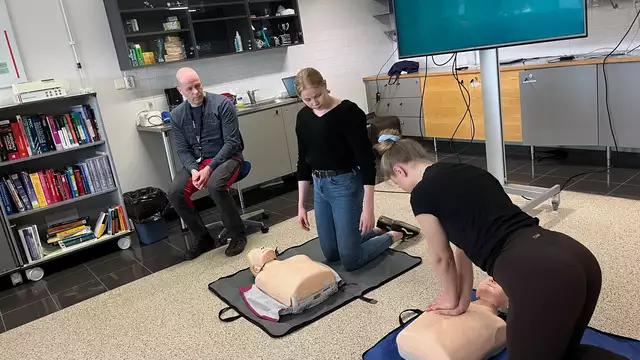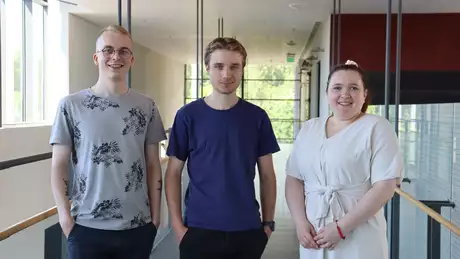
There is no age limit for saving lives
Published: 07.06.2023 / Education
Being able to recognise an emergency, call for help and start resuscitation can be the difference between life and death in a sudden cardiac arrest. Arcada University of Applied Sciences participates in the Kids Save Lives project that teaches children how to act in emergency situations.
Launched by the European Resuscitation Council (ERC) and the World Health Organisation (WHO), Kids Save Lives aims to teach all primary school children basic lifesaving skills.
“Most cases of lifelessness occur at home or in public places, and anyone can play a crucial role. Even a relatively small child can make a big difference and save lives," says Christoffer Ericsson, degree programme director, emergency care at Arcada, and responsible trainer for Kids Save Lives.
Arcada's teachers and students in the emergency care degree programme participate in the project by organising training days for primary school teachers. During the training day, the teachers receive materials and practical training, and can then teach their own students how to act in an emergency.
"Our degree programme and simulation centre is of great importance to society, and this project has real value and impact. I therefore see it as extremely important that we participate with our knowledge, both in the field and as a Swedish-speaking higher education institution.”
Courage to help, ability to act
In several European countries, cardiopulmonary resuscitation has been part of the curriculum in primary schools for years. By introducing it in Finland, it will also increase the number of adults with resuscitation skills in the long term.
“No more than two lessons per year are needed, preferably starting from the first grade. Primary schools have been involved in building the concept itself, and the project has received very good feedback. The teachers feel that they are making a difference, and the pupils ask when they will learn how to save lives," says Ericsson.
In addition to giving children basic knowledge of how to call for help, initiate CPR or use a defibrillator, there is also an altruistic dimension to Kids Save Lives.
“It is of course important that children and young people can recognise an emergency life-saving situation and know the first steps. But it's just as important to develop a willingness to help others at an early stage. We want children to understand that they can and should act to help their fellow human beings, not just walk by," says Ericsson.


